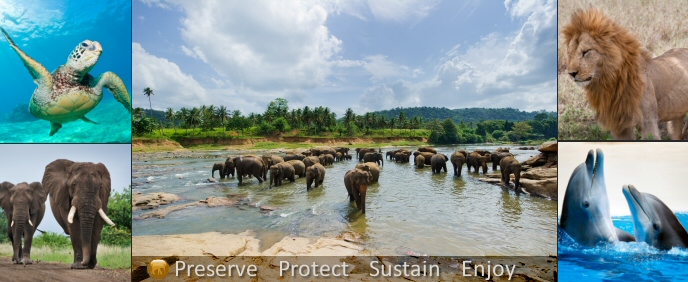
Eco Tours in Washington DC - Sustainable Tourism & Conservation Laws
Washington DC was designed to be a city filled with urban green spaces, beautiful seasonal gardens, and national monuments. 70% of the land in the city is maintained by the National Park Service and is subject to Park Service regulations. Rock Creek Park, the nation's oldest urban park, traverses the entire city and is covered under the Code of Federal Regulations, Title 36, parts 1-199 (36CFR). Camping, hiking, canoeing, and kayaking are allowed in designated areas only, and the rules of the trails are similar to most National Parks: Leave with what you bring and take nothing away but pictures and memories. Fossil hunting, metal detectors, and rock collecting are prohibited unless a specific permit is granted. There are also tripod restrictions on the National Mall between the White House and the US Capitol. There are multiple jurisdictions in Washington DC. The Park Service manages all National Park grounds, the Secret Service Police manages all areas surrounding the White House and various Embassies, and the Washington Metropolitan Police cover all streets and non-federal areas.
The best way to navigate this mosaic of regulations is by taking tours offered by the National Park Service. They are many and varied, ranging from a horse riding tour from Rock Creek Park stables through the historic areas of the Park, to bike tours of the National Mall led by Park Rangers. These tours are affordable, highly informative, and accessible, although advance planning is required since space is limited.
The city recently added 40 miles of bike lanes to city streets which greatly enhances the bicycle access in a city that was already bike friendly. Smart Bike DC partnered with the city to offer availability to self service bike stations all over the city (there's a $40 annual subscribers fee). This allows you to pick up a bike in one area ride to another area and deposit it at the closest station. There are at least 50 such stations in the city and they cover the entire National Mall and most points of interest.
Those willing to venture an hour or two away from the city center can explore a wealth of natural wonders. The Potomac Heritage National Scenic Trail offers eco tours of the tidewater region of Virginia by kayak. The tour focuses on the ecosystems of the Chesapeake Bay and her tributaries, as well as the impact on wildlife from urban sprawl. In the opposite direction from the city is Patuxent Research Refuge. The countries only National Wildlife Refuge designed to support wildlife research. Patuxent offers bird watchers a unique opportunity as a resting and feeding ground to over 200 species, including a nesting pair of bald eagles who've inhabited the North Tract of the Refuge since 1989.
The Potomac River flows through Washington DC offering a natural boundary from Virginia. Canoeing and kayaking is allowed in segments of the river as far west as Great Falls, and east until the tidal basin (which is shared with motor and sail boats). Great Falls can be reached by biking along the historic C&O Canal Trail, and is a nesting and hunting ground for various wading birds including Great Blue Herons. The Falls can also be reached by canoe and kayak but there are seasonal restrictions based on water levels of the Potomac. The C&O Canal also offers authentic barge rides in the summer run by the National Park Service, which begin in Georgetown and end at Great Falls. The barge is pulled by donkeys tended by Park service employees in authentic period costumes.
The Cherry Blossom Festival dominates the spring tourist season, making the National Mall and tidal basin quite impassible. There are bicycle and Segway tours that make traversing the city more comfortable during the height of the festival, but unless you wish to emerge yourself within the sea of humanity which descends upon the city at that time, early spring is to be avoided. Washington DC summers can be legendary for their heat and high humidity, especially August. Summer is a good time to plan canoe and kayaking trips. The forested highlands (relative term, most of DC is sea level) can be as much as 10 degrees cooler, so day trips west can be a welcome respite from the heat.
Pierre L'Enfant designed Washington DC to have a network of parks and sweeping vistas. All of which is still on view today, as DC remains one of the Nations most walkable cities with progressive attitudes towards public transportation and bicycles. The Nations Capital also sits in a curious bowl of biodiversity, with the Chesapeake Bay to the east and the Appalachian Mountains to the west. A city of history and natural beauty beckons exploration.

